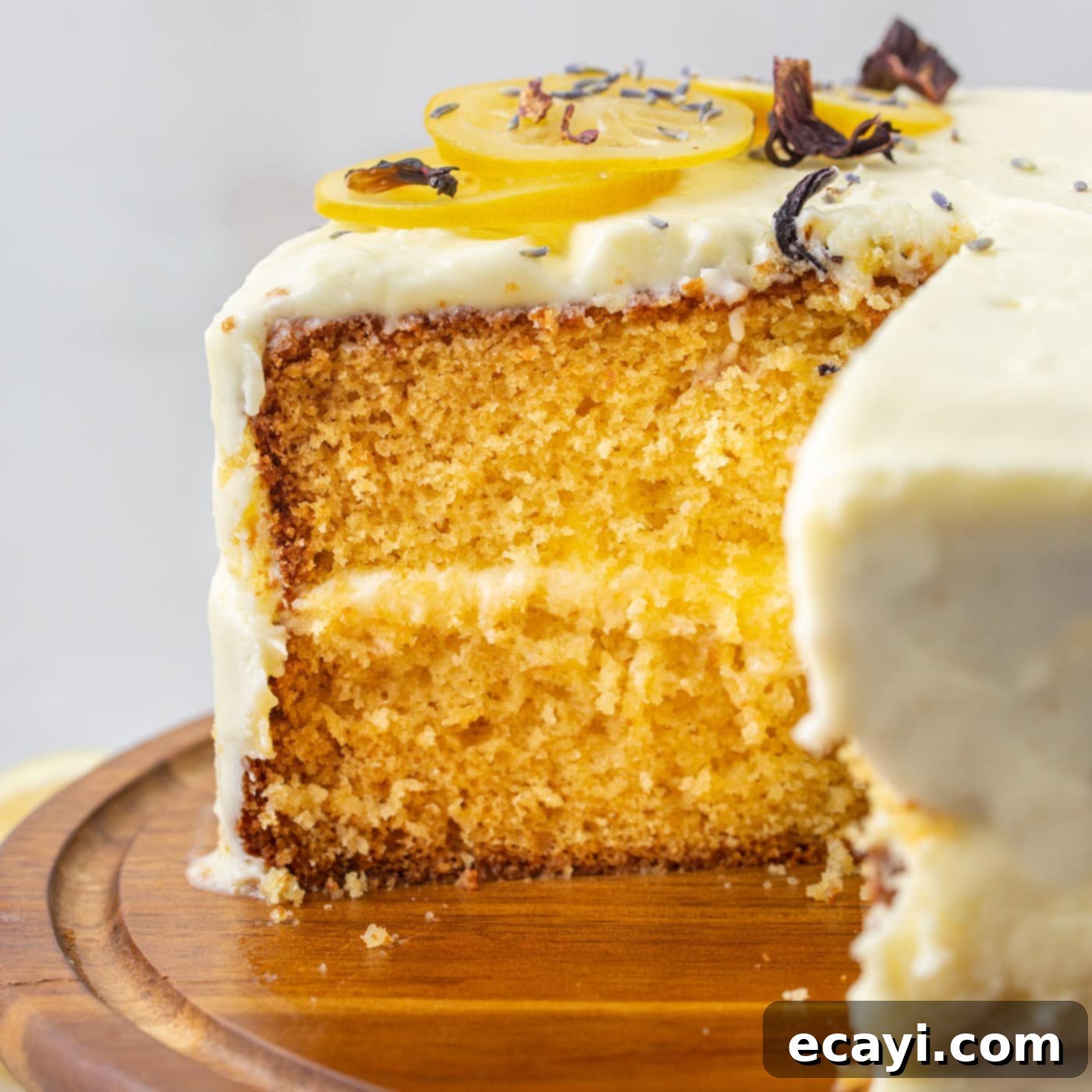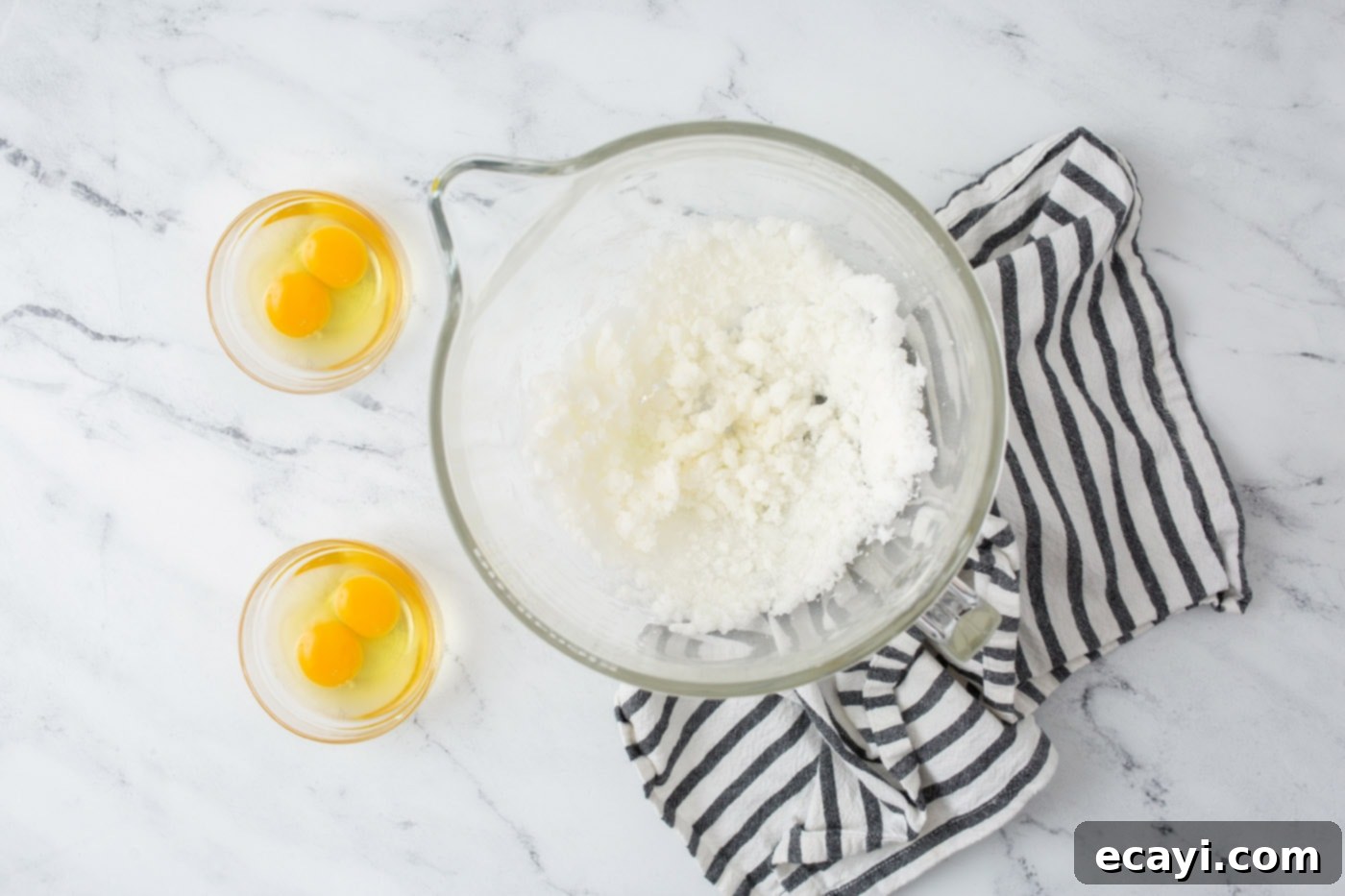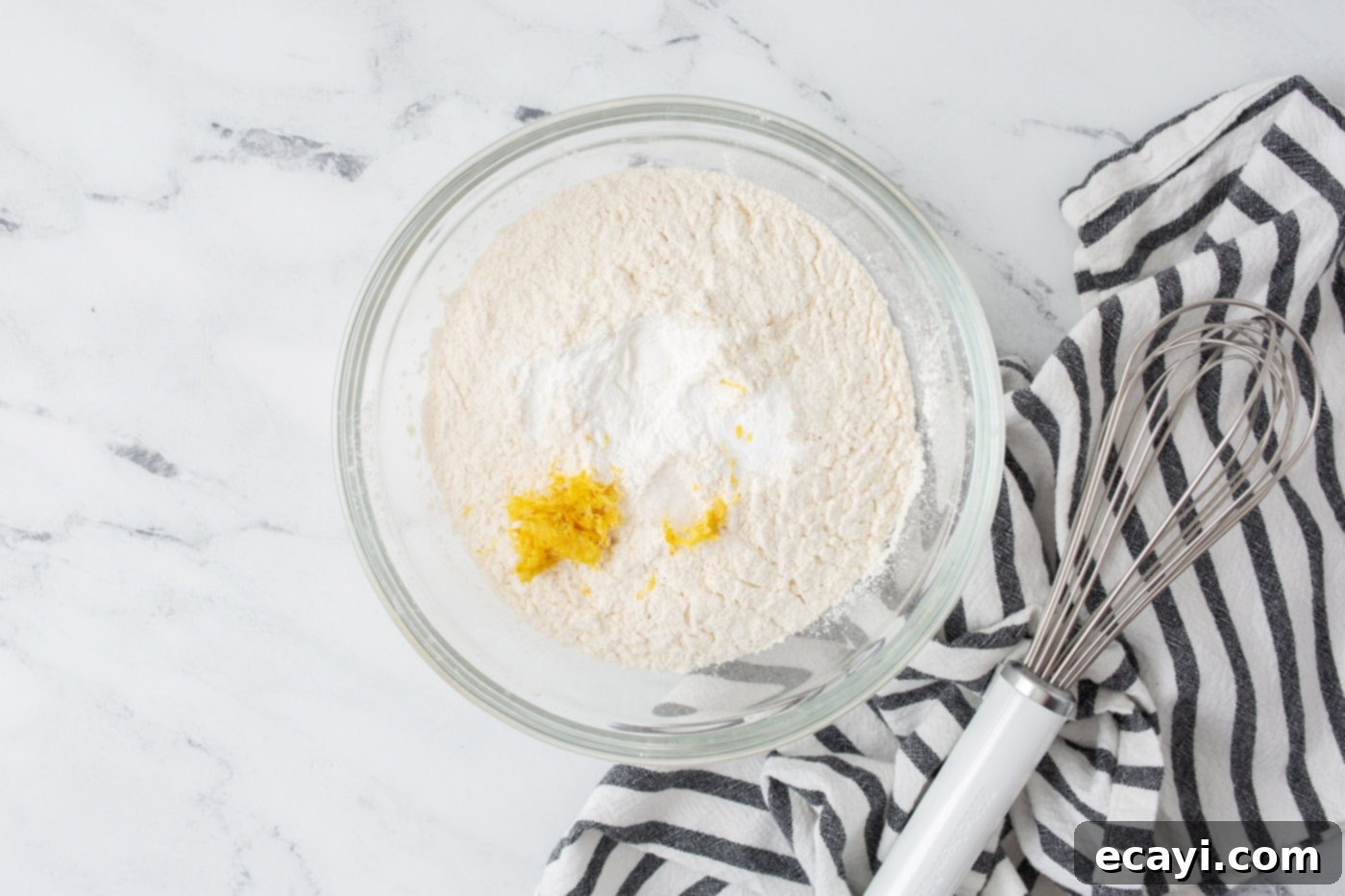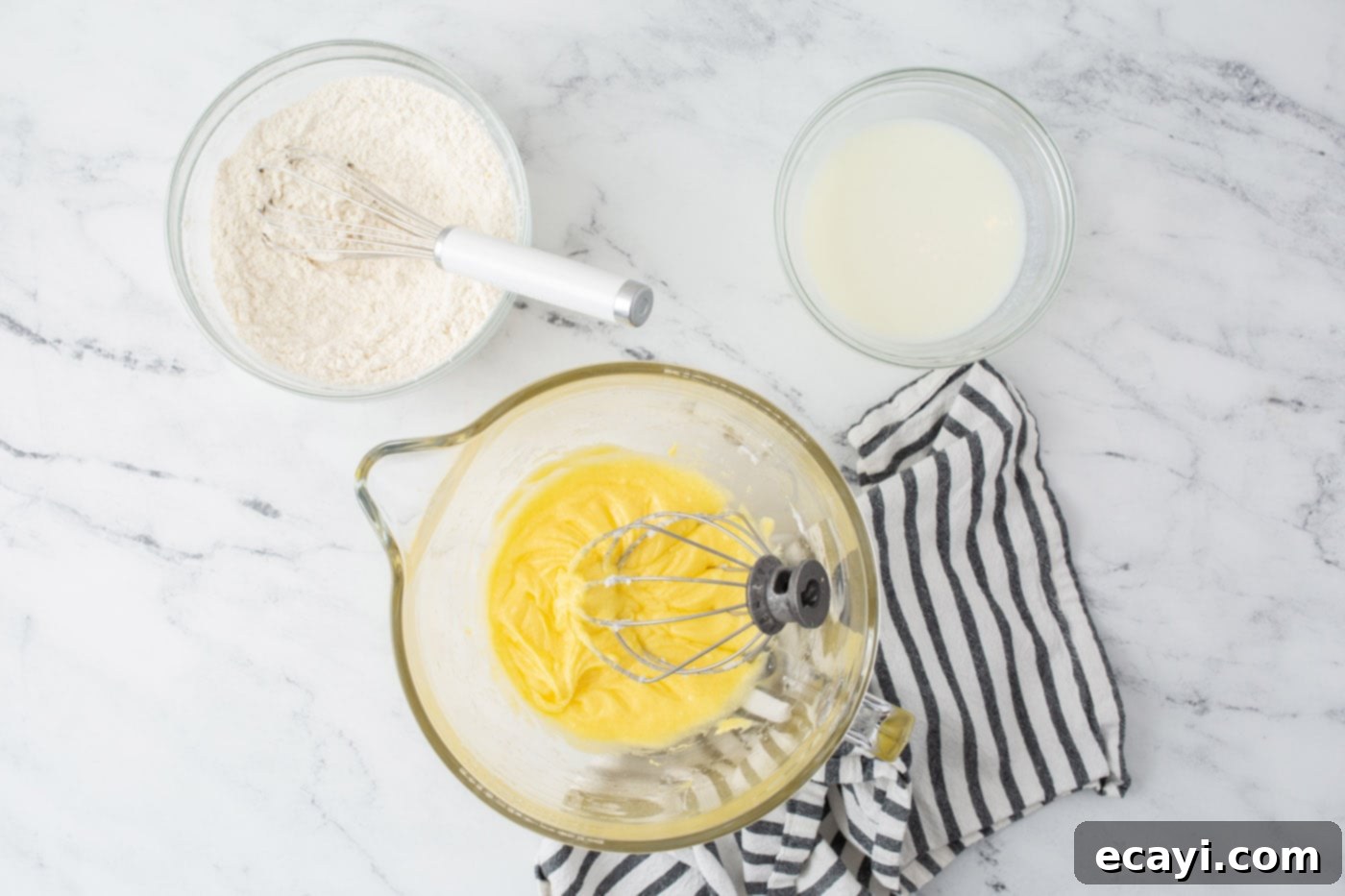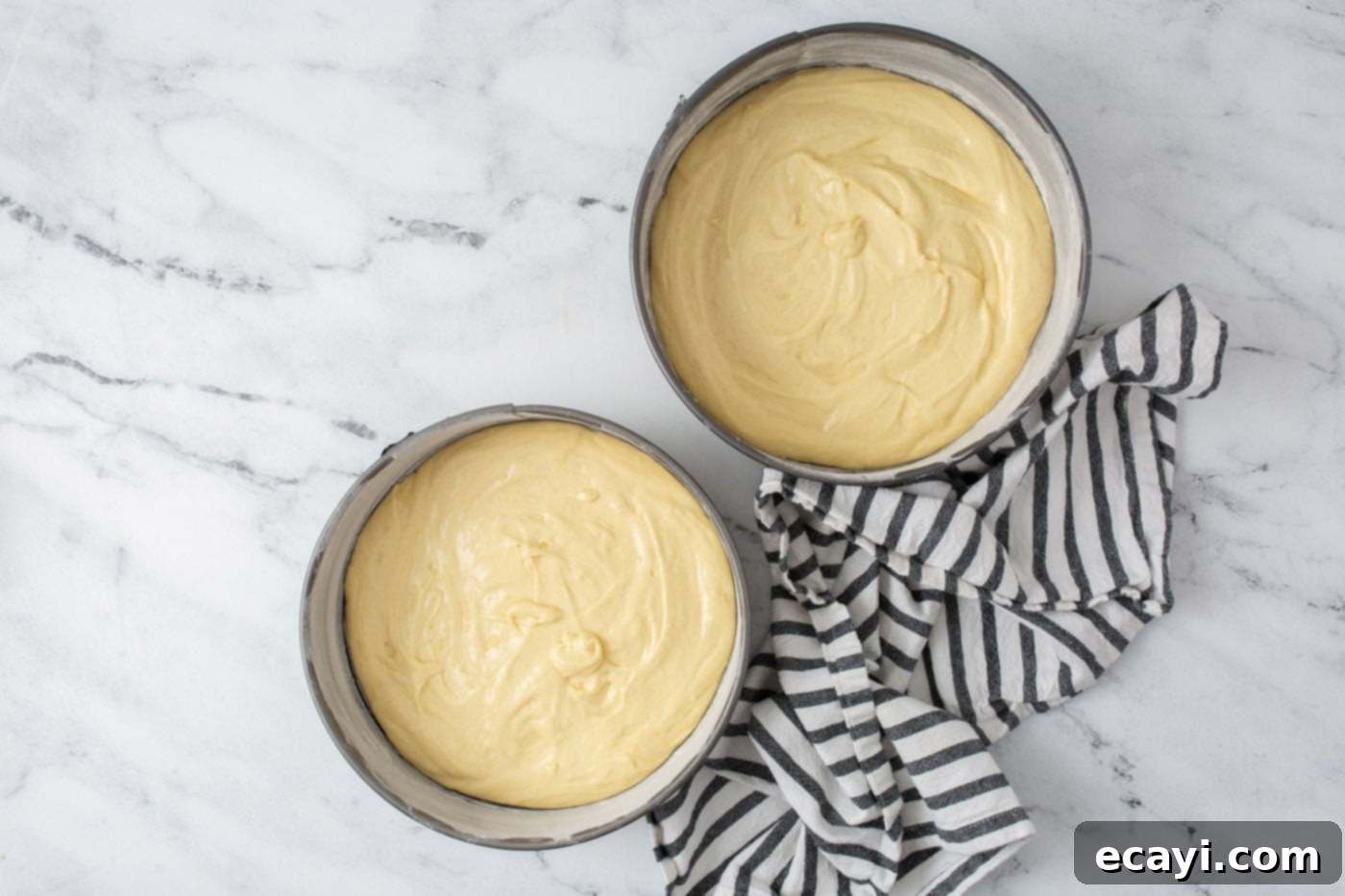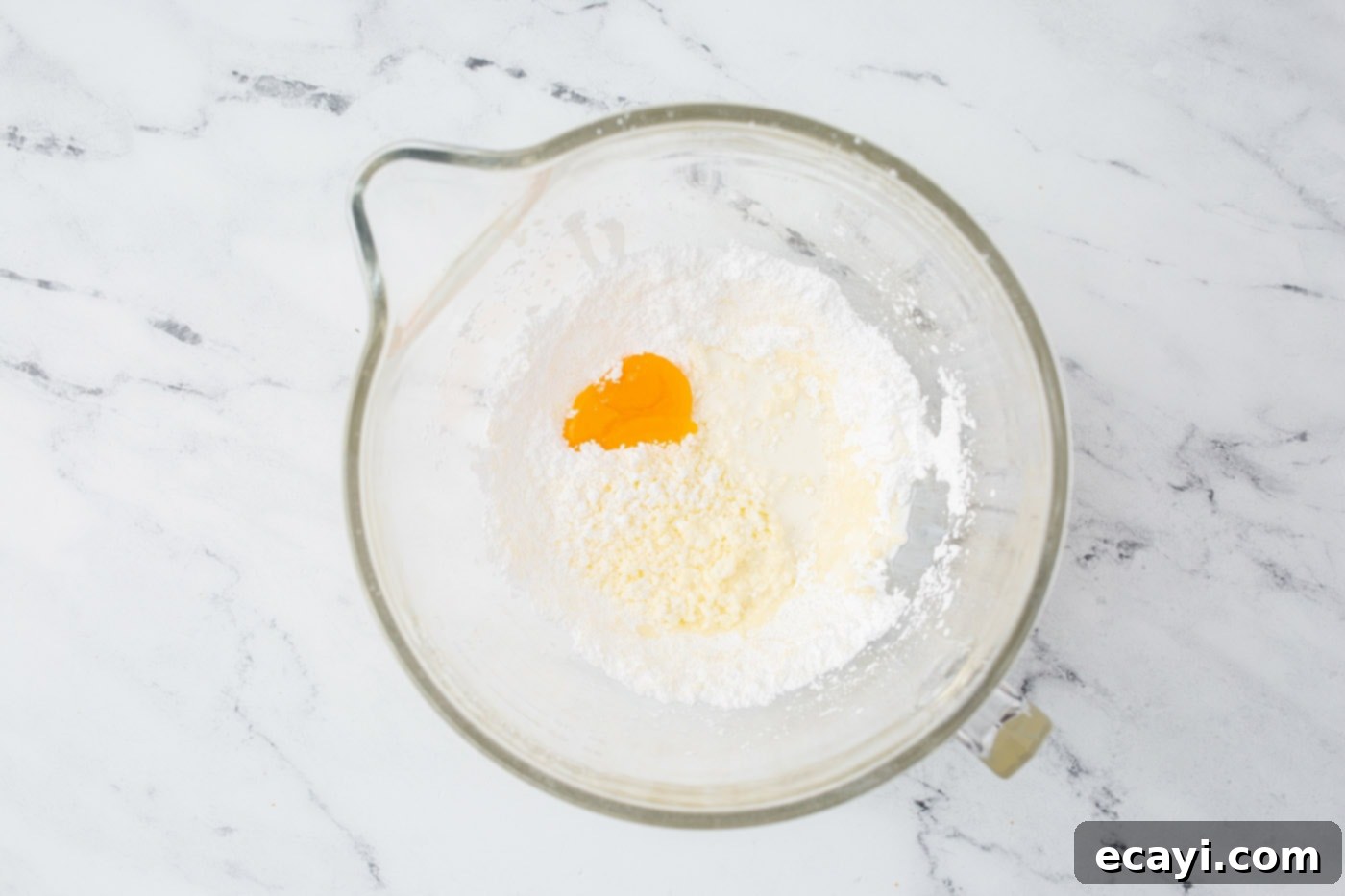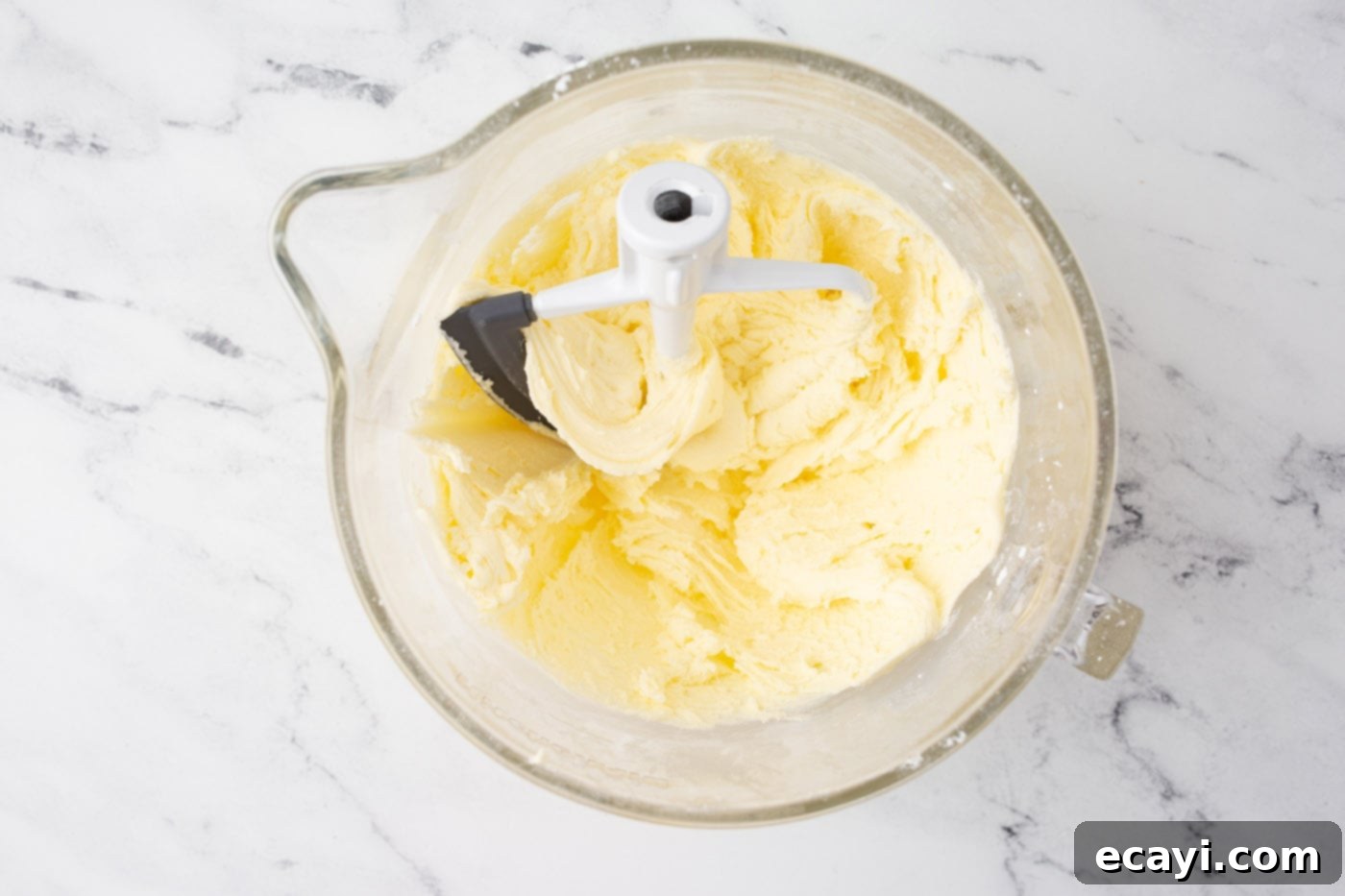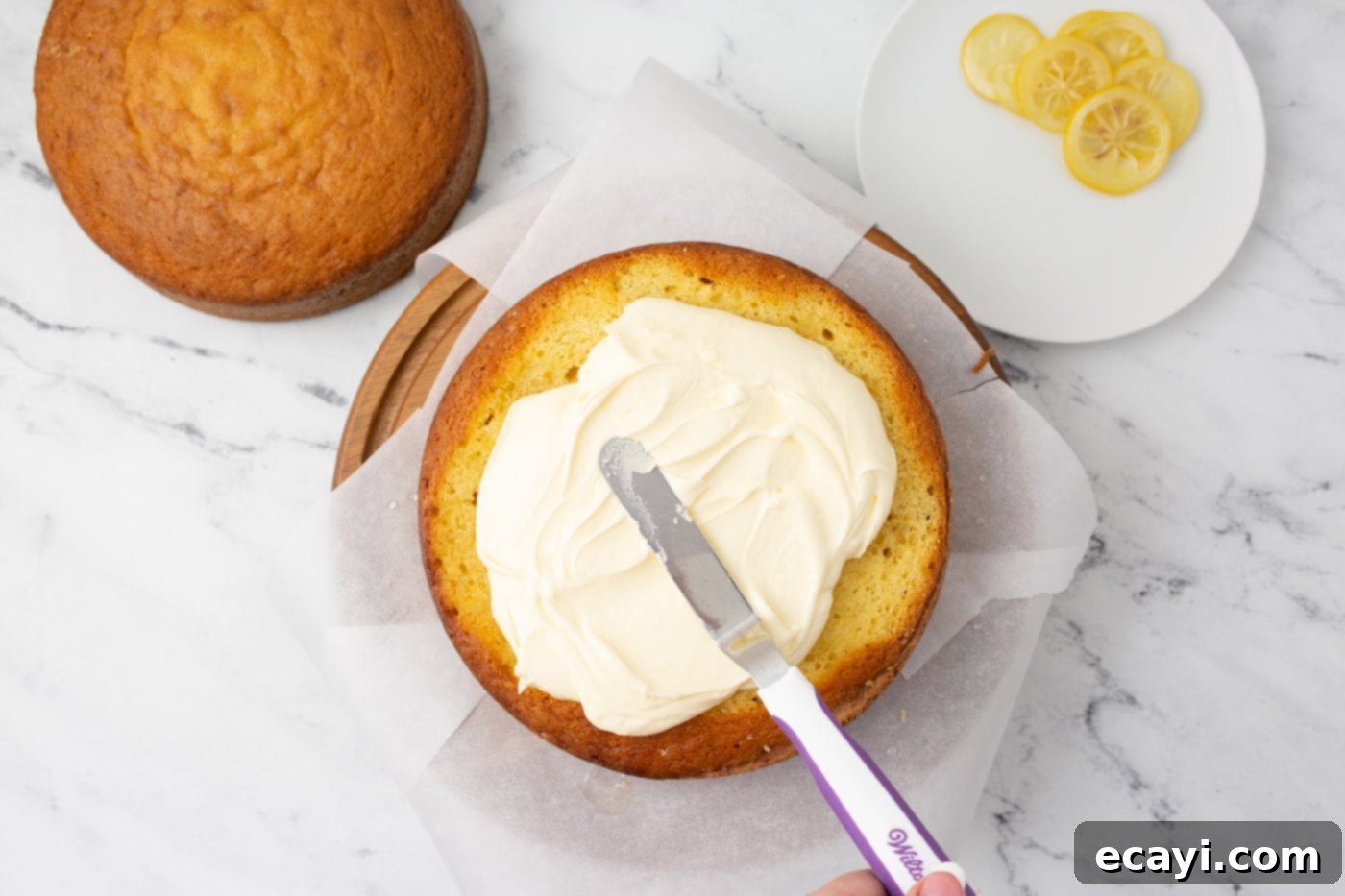Delightful Two-Tiered Lemon Cake: Your Ultimate Recipe for a Zesty, Show-Stopping Dessert
Prepare to impress with this truly gorgeous two-tiered lemon cake, an absolute masterpiece crowned with rich, velvety lemon buttercream frosting and elegantly adorned with shimmering candied lemon slices. This cake is the epitome of refreshing indulgence, making it an impeccable choice for any spring or summer gathering, from garden parties to celebratory brunches. Its bright citrus notes and light, tender crumb promise to delight every palate.
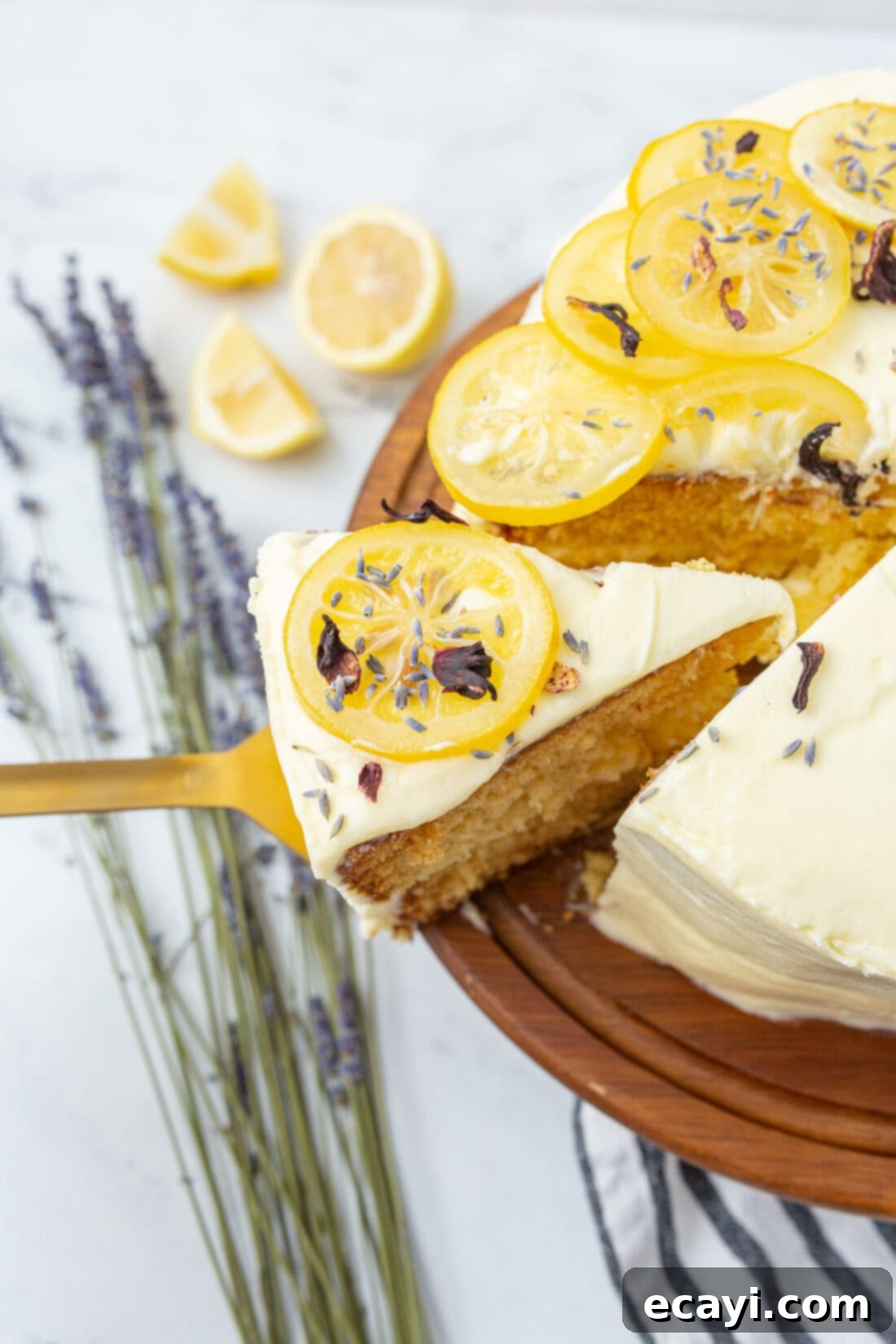
Why This Lemon Cake Recipe Is a Must-Try
If you’re searching for a dessert that not only tastes divine but also steals the show, you’ve landed on the perfect recipe. This beautiful lemon cake features two generous tiers of perfectly baked, citrus-infused yellow cake. Each layer is lovingly filled and topped with a luxurious, light, and fluffy lemon buttercream frosting, ensuring a burst of vibrant flavor in every bite. The combination of the tender cake and the tangy-sweet frosting creates a harmonious balance that is both satisfying and incredibly refreshing.
Despite its rich flavor profile, this lemon cake remains surprisingly light and airy, making it an ideal treat for warmer weather or after a hearty meal. The secret lies in the careful balance of ingredients that contribute to its delicate texture and intense lemon essence. For an extra layer of decadence and an even more pronounced lemon punch, consider adding a thin layer of our homemade Instant Pot lemon curd between the cake layers. You could even daringly replace the frosting in the very center of the cake with just lemon curd for a bolder, more intensely tart experience. This versatility allows you to customize the cake to your exact preference, whether you favor a subtle hint of lemon or an all-out citrus celebration.
This recipe has been meticulously tested to ensure foolproof results, even for novice bakers. We’ve streamlined the process without compromising on flavor or presentation, offering clear, step-by-step instructions that guide you from start to finish. The result is a consistently moist, flavorful cake that looks as impressive as it tastes, guaranteed to garner compliments at any event. From its perfectly golden crumb to its elegant frosting swirls and bright candied lemon garnish, every element of this cake is designed for pure enjoyment.
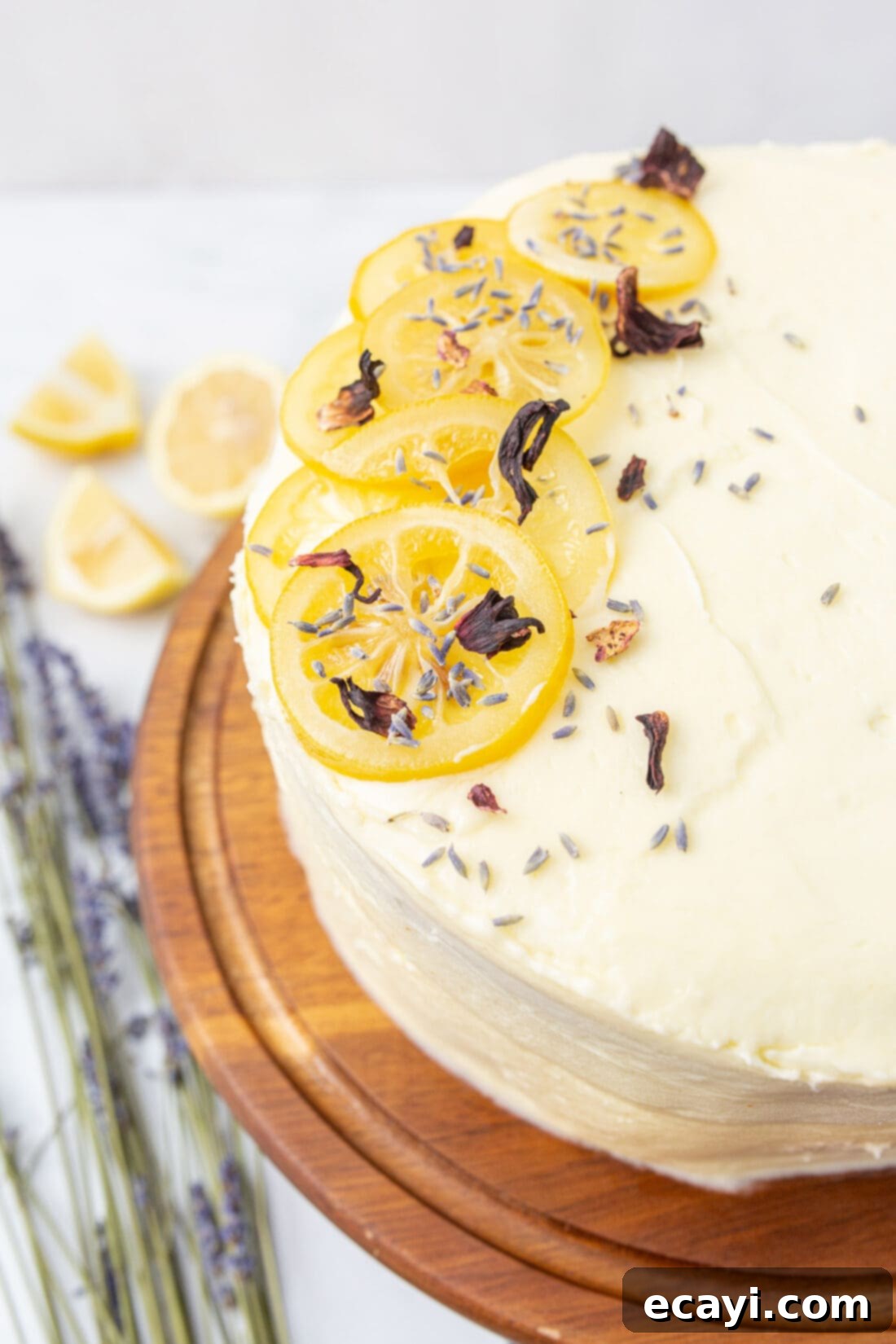
Essential Ingredients for Your Perfect Lemon Layer Cake
To embark on your journey to creating this magnificent lemon cake, gather your ingredients. All precise measurements, a comprehensive list of ingredients, and detailed instructions can be found in the printable recipe card located at the very end of this blog post. This section provides a visual overview of the components you’ll need for both the cake and its luscious frosting.
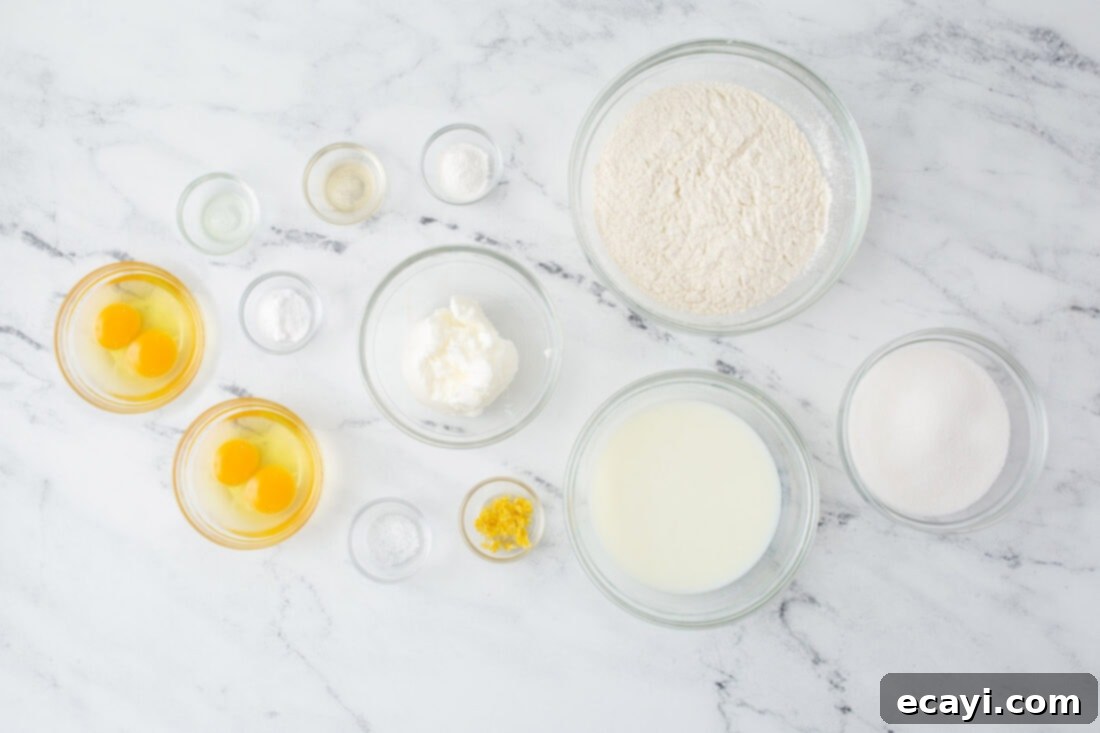
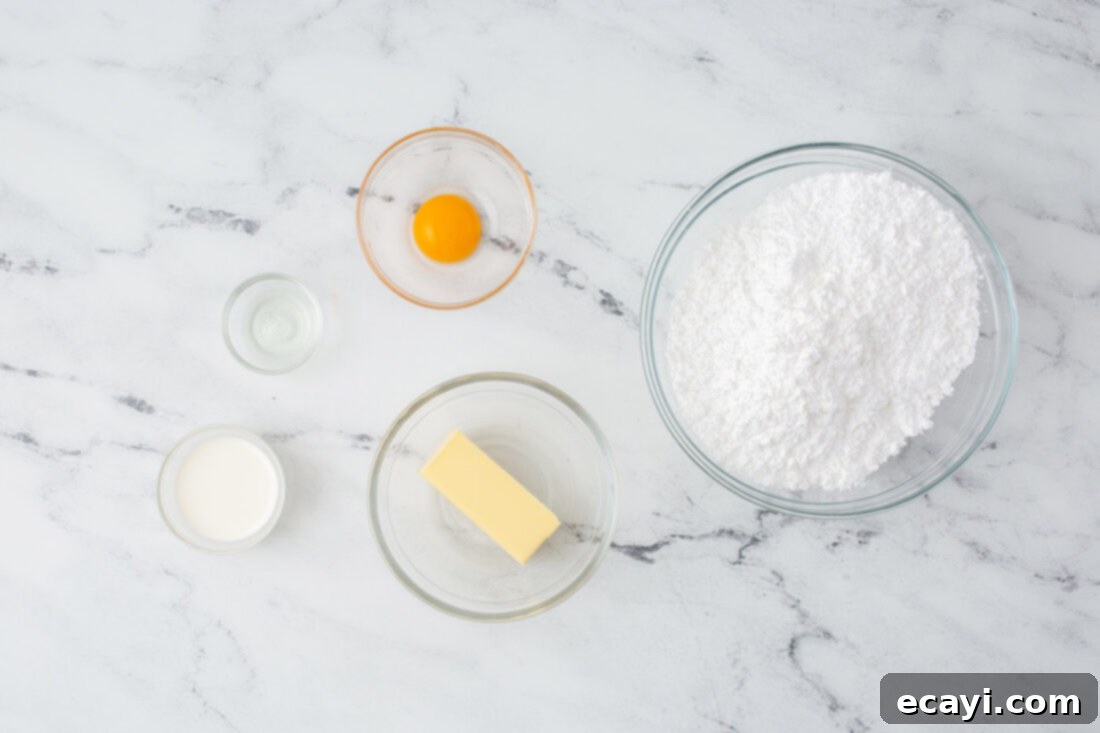
Ingredient Spotlight & Smart Substitution Tips
Understanding your ingredients is key to successful baking. Here’s a closer look at the components that make this lemon cake extraordinary, along with helpful substitution suggestions:
FOR THE CAKE: The foundation of this cake relies on specific ingredients to achieve its renowned light and tender texture.
- Shortening: The use of shortening is crucial for this recipe. It helps the cake maintain its structure and achieve a beautiful height, while also contributing to a remarkably light, soft, and perfectly tender crumb. Unlike butter, shortening has a higher melting point, which means it traps more air during creaming and creates a more stable emulsion, leading to a loftier cake.
- Lemon Extract vs. Lemon Juice: While lemon extract delivers a concentrated citrus flavor without adding extra liquid, you can absolutely substitute it. If you prefer a more natural citrus taste, use 2 tablespoons of fresh lemon juice in place of 1 teaspoon of lemon extract. Alternatively, for a different flavor profile, swap the lemon extract entirely with almond extract for a delicate almond-flavored cake.
- Cake Flour: This recipe calls for cake flour, which has a lower protein content than all-purpose flour. This is essential for achieving the delicate, fine crumb structure that makes this lemon cake so wonderfully tender. If you don’t have cake flour, you can make your own by measuring 4 cups of all-purpose flour, removing 8 tablespoons, and replacing it with 8 tablespoons of cornstarch. Sift this mixture several times to ensure it’s well combined.
- Buttermilk: Buttermilk reacts with the baking soda to create a light and fluffy cake. Its acidity also contributes to the cake’s tender texture and adds a subtle tang that complements the lemon. If you don’t have buttermilk, you can easily make a substitute: pour 2 tablespoons of fresh lemon juice or white vinegar into a liquid measuring cup, then fill the rest of the way to 2 cups with regular milk. Let it sit for 5-10 minutes until it slightly curdles.
FOR THE FROSTING: This decadent buttercream is designed to perfectly complement the cake’s vibrant flavor.
- Lemon Extract: The buttercream frosting also utilizes 1 teaspoon of lemon extract for a bright, zesty flavor that balances the sweetness. If you’d prefer a classic taste, simply substitute with vanilla extract for a traditional vanilla buttercream. For an even more intense lemon flavor, you can also add a teaspoon of fresh lemon zest to the frosting.
- Room Temperature Butter: Ensure your butter is at true room temperature (soft enough to indent with a finger but not melted) for the best creaming results. This helps incorporate air, leading to a lighter, fluffier frosting.
- Powdered Sugar: Also known as confectioners’ sugar, this fine sugar dissolves easily to create a smooth, lump-free frosting. Sifting it before use is highly recommended to prevent any grittiness.
Crafting Your Homemade Lemon Cake: Step-by-Step Guide
These step-by-step photos and detailed instructions are provided to help you visualize each stage of making this delightful lemon cake. For a convenient printable version of this recipe, complete with precise measurements and comprehensive instructions, you can Jump to Recipe at the bottom of this page.
- Prepare Your Pans: Begin by preheating your oven to 350°F (175°C). This ensures the oven is at the correct temperature when your batter is ready, promoting even baking. Thoroughly grease and flour two 8-inch round cake pans. This crucial step prevents the cakes from sticking, allowing for easy removal. Set the prepared pans aside.
- Cream Shortening and Sugar: In the bowl of a stand mixer fitted with the whisk attachment, combine the shortening and granulated sugar. Cream them together on medium-high speed until the mixture is light, fluffy, and pale in color. This process incorporates air, which is vital for a tender cake.

- Incorporate Flavor and Eggs: Add the vanilla extract, lemon extract (or lemon juice), and lemon zest to the creamed mixture. Mix until well combined. Next, add the eggs one at a time, ensuring each egg is fully incorporated before adding the next. This prevents the mixture from separating. Remember to scrape down the sides of the bowl with a spatula as needed to ensure all ingredients are evenly mixed.
- Combine Dry Ingredients: In a separate, medium-sized bowl, whisk together the cake flour, baking powder, baking soda, and salt. Whisk thoroughly for about 30 seconds to ensure the leavening agents and salt are evenly distributed throughout the flour.

- Alternate Wet and Dry: Gradually add the dry flour mixture to the stand mixer in three alternating additions, with two additions of buttermilk in between. Begin and end with the flour mixture. For example: add 1/3 of the flour, mix, then half of the buttermilk, mix, then 1/3 of the flour, mix, the remaining buttermilk, mix, and finally the last 1/3 of the flour, mixing just until combined. Avoid overmixing, as this can develop the gluten and result in a tough cake. Scrape down the sides of the bowl frequently.

- Bake the Cakes: Divide the batter evenly between the two prepared cake pans. Bake in the preheated oven for approximately 45 minutes. The cakes are done when the tops are golden brown and a wooden skewer inserted into the center comes out clean. The center should also feel firm and not wiggle when gently shaken.

- Cool the Cake Layers: Once baked, remove the cakes from the oven. Allow them to cool in their pans for 10 minutes. This helps the cakes firm up before handling. After 10 minutes, carefully invert the cakes onto wire cooling racks and let them cool completely to room temperature. Attempting to frost warm cakes will result in melted frosting.
- Prepare the Lemon Buttercream: While the cake layers are cooling, begin preparing your lemon buttercream frosting. In the clean bowl of a stand mixer fitted with the paddle attachment, cream together the room temperature butter and half of the powdered sugar until light and fluffy.
- Finish the Frosting: Gradually add the remaining powdered sugar, along with the egg yolk and lemon extract. Begin by adding 1/4 cup of cream or milk, then continue adding it one tablespoon at a time until your desired frosting consistency is achieved. The frosting should be smooth and easily spreadable, but thick enough to hold its shape—not as thin as whipped cream.


- Make Candied Lemon Slices: For the beautiful garnish, combine sugar and water in a small saucepan. Bring the mixture to a boil over medium heat, stirring until the sugar is fully dissolved. Add the thinly sliced lemons to the simmering syrup. Reduce heat and simmer gently for about 5 to 10 minutes, or until the lemon slices become translucent and tender.
- Cool Candied Lemons and Syrup: Carefully remove the candied lemon slices from the syrup and arrange them on a piece of parchment paper to cool and dry slightly until you are ready to decorate the cake. Reserve the remaining lemon syrup and allow it to cool completely. This syrup is a hidden gem for an extra flavor boost!
- Trim and Prepare for Frosting: Once the cake layers have cooled entirely to room temperature, use a serrated knife to level their tops if necessary, creating flat surfaces for stacking.
EXPERT TIP – The lemon syrup created during the candying process is too delicious to waste! Before applying your buttercream, lightly brush the cooled cake layers with this reserved lemon syrup. This step not only infuses more delightful lemon flavor into the cake but also acts as a “crumb coat” barrier, significantly reducing the amount of crumbs that will mix into your frosting, leading to a much smoother finish.
- Assemble and Decorate: Place one cooled, trimmed cake layer flat on your serving plate or cake stand. Spread an even layer of lemon buttercream frosting over the top. Carefully place the second cake layer on top. Using an icing spatula, spread frosting evenly over the top and sides of the entire cake until it is completely covered and smooth. Arrange the cooled candied lemon slices artistically on top of the cake, along with any other desired additional toppings such as a sprinkle of lemon zest, fresh berries, or edible flowers.

Frequently Asked Questions & Expert Baking Tips
For optimal freshness and convenience, I highly recommend using a dedicated cake container. This type of container makes storing cakes significantly easier and helps keep it sealed and wonderfully fresh. This lemon cake can be stored at room temperature in an airtight container for 3-4 days, maintaining much of its moisture and flavor. If you wish to extend its life, you may also keep it in the refrigerator for up to 6 days; however, please be aware that refrigeration can sometimes cause the cake to lose a bit of its original moisture, potentially making it slightly less tender than when freshly baked.
Absolutely, this lemon cake freezes exceptionally well, making it a perfect option for future enjoyment or for preparing ahead of time. To freeze, flash freeze the assembled and frosted cake for about an hour, or until the buttercream frosting has completely hardened. This step prevents the frosting from sticking to the wrapping. Once firm, remove the cake from the freezer and wrap it meticulously: first, wrap it tightly twice with plastic wrap, then follow with a layer of aluminum foil. This double-layer wrapping provides maximum protection against freezer burn. When properly wrapped, the cake can be stored in the freezer for up to 3 months. To serve, simply thaw the cake overnight in the refrigerator, then let it come to room temperature for about an hour before slicing.
Yes, you can certainly prepare components of this cake ahead of time, which can significantly reduce stress on the day of your event. For the best taste and texture, I suggest baking the cake layers a day ahead of time, but holding off on frosting and assembling the layers until the day you plan to serve it. Once the cakes are baked and completely cooled, wrap each layer tightly in plastic wrap to prevent them from drying out, and store them at room temperature. The lemon buttercream frosting can also be made a day or two in advance. Store the prepared frosting in an airtight container in the refrigerator. On the day of assembly, allow the refrigerated lemon frosting to sit at room temperature for approximately 30 minutes to soften slightly, then give it a good stir with your stand mixer or a spatula to restore its creamy, spreadable consistency before frosting the cakes.
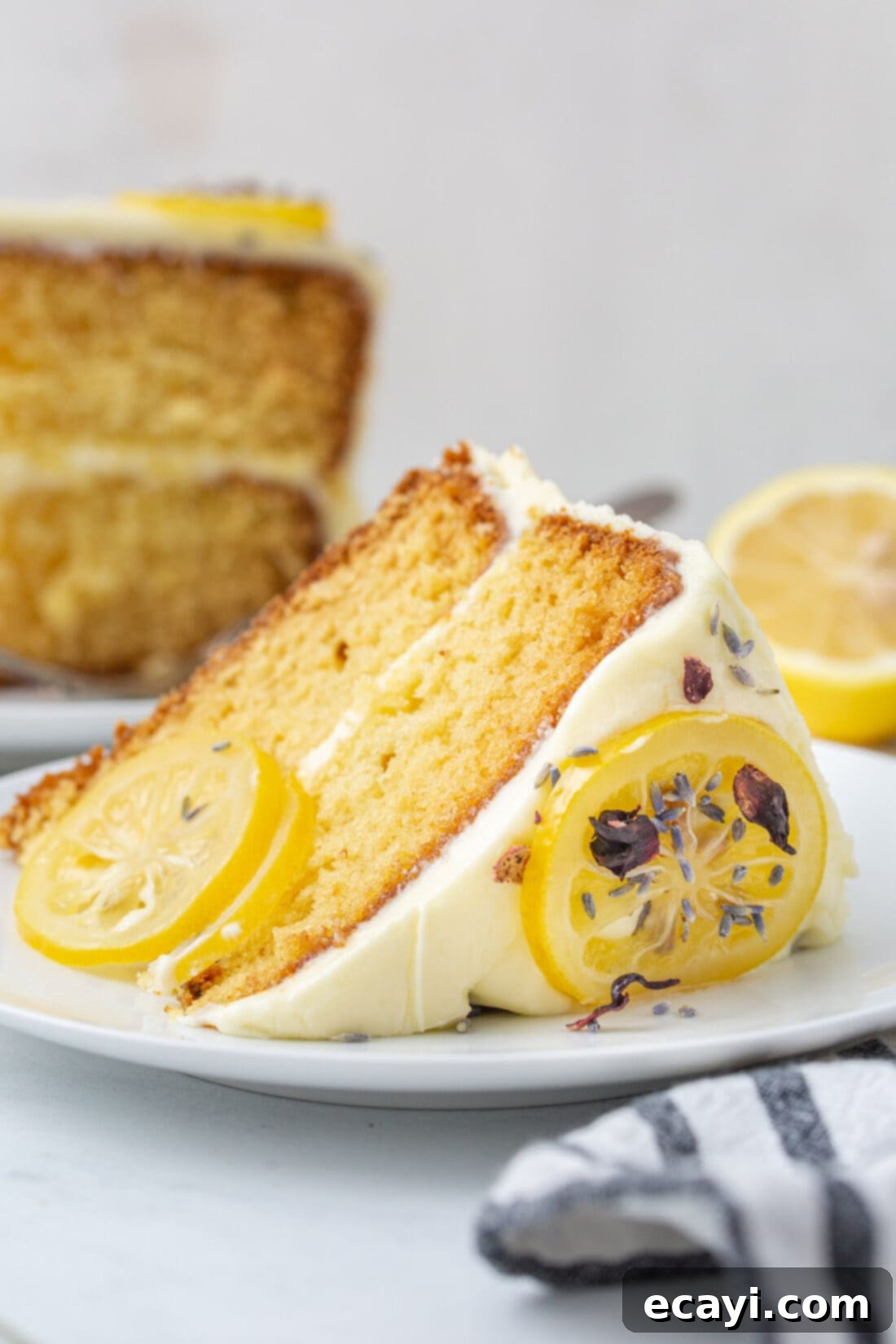
Elegant Serving Suggestions for Your Lemon Cake
This beautiful lemon cake is a showstopper on its own, but with a few thoughtful touches, you can elevate its presentation even further. Beyond the delicate candied lemon slices, consider garnishing with a light sprinkle of aromatic lavender buds or a few vibrant, edible flowers. These additions not only enhance its visual appeal but also complement its fresh, floral notes. A dusting of powdered sugar just before serving can also add an elegant finish.
This versatile lemon cake is wonderfully suited for a variety of occasions. It’s an ideal dessert for festive Easter gatherings, cheerful birthday celebrations, elegant bridal showers, or sweet baby showers. Its bright flavor also makes it a delightful accompaniment to a warm cup of coffee or a refreshing glass of iced tea, perfect for an afternoon treat. For an extra special touch, serve individual slices alongside a scoop of vanilla bean ice cream or a dollop of fresh whipped cream, allowing the citrus flavors to shine through beautifully.
Explore More Zesty Lemon Recipes
If you adore the bright and refreshing flavor of lemon, you’ll love these other citrus-inspired recipes:
- Sweet & Tart Lemon Bars with Sour Cream Topping
- Creamy Lemon Lush Dessert
- No-Bake Lemon Icebox Cake
- Delicious Lemon Streusel Squares
- Classic Lemon Meringue Pie Bars
- Instant Pot Lemon Curd Cheesecake
- Homemade Lemon Baked Donuts
I am passionate about baking and cooking, and I love sharing my culinary adventures and tested recipes with all of you! Remembering to visit the blog daily for new inspirations can be tricky, which is why I offer a convenient newsletter every time a fresh recipe is posted. Simply subscribe to start receiving your free daily recipes directly in your inbox and never miss a delicious update!
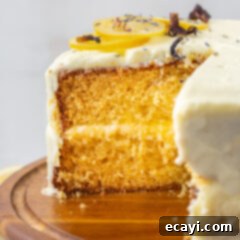
Classic Lemon Layer Cake with Zesty Buttercream
IMPORTANT – Don’t miss the Frequently Asked Questions and Expert Tips section earlier in this blog post, which you may find incredibly helpful for baking success! Simply scroll back up to read them!
Print It
Pin It
Rate It
Save ItSaved!
Ingredients
For the Moist Lemon Cake Layers
- 1 cup shortening
- 2 cups granulated sugar
- 1 tsp vanilla extract
- 1 tsp lemon extract or 2 Tbsp fresh lemon juice for a more natural flavor
- zest of 1-2 large lemons
- 4 large eggs
- 4 cups cake flour
- 3 tsp baking powder
- 2 ½ tsp baking soda
- 1 tsp salt
- 2 cups buttermilk
For the Zesty Lemon Buttercream Frosting
- ⅓ cup unsalted butter at room temperature
- 32 oz powdered sugar (confectioners’ sugar), sifted
- 1 large egg yolk
- 1 tsp lemon extract
- ½ cup heavy cream or whole milk
For the Candied Lemon Slices (Garnish)
- 1 cup granulated sugar
- 1 cup water
- thin slices of 1 large lemon
Tools You’ll Need
-
Two 8-inch round cake pans
-
Stand mixer with whisk and paddle attachments
-
Wire cooling racks
-
Small sauce pot
-
Icing spatula or offset spatula
Before You Begin & Important Notes
- You can use either regular round cake pans or springform pans for this recipe. Ensure they are thoroughly greased and floured.
- When preparing the buttercream frosting, always start with 1/4 cup of heavy cream or milk, then gradually add more, one tablespoon at a time, until you reach your desired consistency. The frosting should be smooth and spreadable, yet firm enough to hold its shape well.
- Using room temperature butter for the frosting is crucial for achieving a light and fluffy texture.
- Sifting powdered sugar for the frosting helps prevent lumps and ensures a silky-smooth finish.
Detailed Instructions for Baking & Decorating
-
Preheat your oven to 350°F (175°C). Prepare two 8-inch round cake pans by thoroughly greasing them with shortening or butter, then lightly dusting with flour, tapping out any excess. Set these prepared pans aside.
-
In the large bowl of a stand mixer, fitted with the whisk attachment, combine the shortening and granulated sugar. Cream them together on medium-high speed for 3-5 minutes until the mixture is visibly light in color and fluffy in texture.
-
Add the vanilla extract, lemon extract (or fresh lemon juice), and lemon zest to the creamed mixture. Mix until just combined. Then, add the eggs one at a time, beating well after each addition until fully incorporated. Use a spatula to scrape down the sides of the bowl periodically to ensure even mixing.
-
In a separate medium bowl, whisk together the cake flour, baking powder, baking soda, and salt until thoroughly combined and no lumps remain.
-
With the mixer on low speed, gradually add the dry flour mixture to the wet ingredients in three additions, alternating with two additions of the buttermilk. Begin and end with the flour. Mix only until the flour streaks disappear, being careful not to overmix, which can result in a tough cake. Again, scrape down the sides of the bowl as needed to ensure a uniform batter.
-
Divide the finished cake batter evenly between your two prepared 8-inch cake pans. Bake in the preheated oven for approximately 45 minutes, or until the cake tops are golden brown and a wooden skewer inserted into the center comes out clean. The centers should feel firm to the touch.
-
Remove the baked cakes from the oven and allow them to cool in their pans on wire cooling racks for 10 minutes. This helps them set. After 10 minutes, carefully invert the cakes onto the wire racks to cool completely to room temperature before frosting. This is crucial for smooth frosting.
-
While the cake layers are cooling, prepare the lemon buttercream frosting. In the clean bowl of your stand mixer, using the paddle attachment, cream together the room temperature butter and half of the sifted powdered sugar until light and fluffy.
-
Add the remaining powdered sugar, the egg yolk, and the lemon extract to the mixer. Begin with 1/4 cup of cream or milk, and then gradually add additional cream or milk, one tablespoon at a time, until the frosting reaches a smooth, spreadable consistency that holds its shape well.
-
To make the candied lemons for garnish, combine the granulated sugar and water in a small sauce pot. Bring the mixture to a boil over medium heat, stirring until the sugar completely dissolves, creating a syrup.
-
Add the thin lemon slices to the simmering sugar syrup. Reduce the heat to low and allow them to simmer gently for about 5 to 10 minutes, or until the slices appear translucent. Carefully remove the candied lemon slices and arrange them on a piece of parchment paper to cool and dry until you are ready to decorate the cake. Set the remaining lemon syrup aside and allow it to cool; it will be used later.
-
Once the cake layers are completely cooled to room temperature, use a serrated knife to carefully trim any domed tops, creating perfectly flat layers for stacking. This ensures a stable and professional-looking cake. PRO TIP: The leftover lemon syrup from candying the lemons is fantastic! Lightly brush this cooled syrup over your cake layers before applying the buttercream. This not only adds an extra layer of lemon flavor but also helps to trap loose crumbs, preventing them from mixing into your frosting.
-
To assemble, place one trimmed cake layer onto your serving plate or cake stand. Spread a generous, even layer of lemon buttercream frosting over the top. Carefully place the second cake layer on top. Using an icing spatula or offset spatula, frost the top and sides of the entire cake until it is completely covered and smooth. Finally, arrange the cooled candied lemon slices and any other desired garnishes attractively on top of the cake.
Nutrition Information (Estimated)
The recipes on this blog are meticulously tested using a conventional gas oven and gas stovetop. Please note that oven performance can vary significantly, especially with older models, leading to inconsistent cooking and baking. We strongly recommend using an inexpensive oven thermometer to ensure your oven is consistently heating to the precise temperature required. If you’re using a toaster oven or a countertop oven, be aware that their heat distribution may differ from a full-sized conventional oven, and you might need to adjust your cooking or baking times accordingly. For recipes utilizing specialized appliances like pressure cookers, air fryers, or slow cookers, a link to the specific appliance models we use is typically provided within each recipe for reference. For baking recipes where measurements are given by weight, please understand that using volume measurements (cups) instead may yield different results, and we cannot guarantee success with that method due to variations in density.
